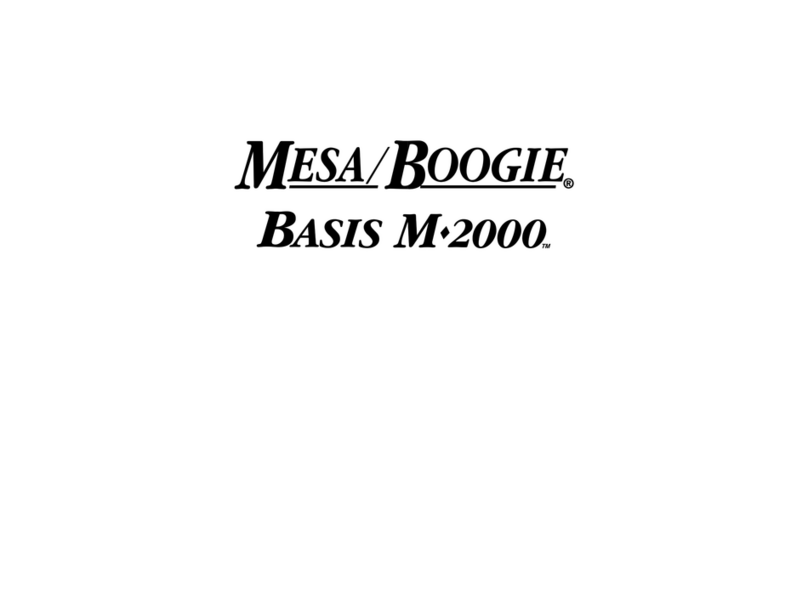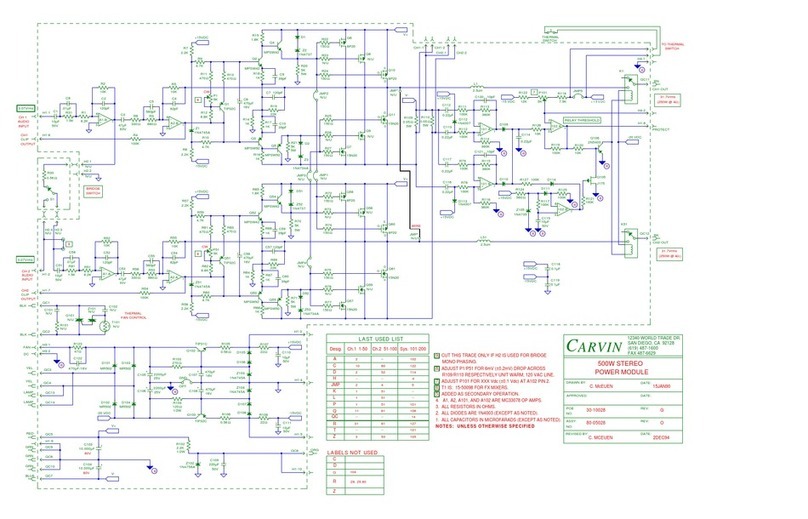
PAGE 1
IMPORTANT SAFETY INSTRUCTIONS
1. Before attempting to use this apparatus, read and follow these instructions for proper use.
2. Keep these instructions.
3. Heed all warnings.
4. Do not use this apparatus near water.
5. Clean only with a dry cloth, do not use any solvent such as benzene, naphtha or paint thinner on apparatus.
6. Do not block any ventilation openings. Install in accordance with manufacturer’s instructions.
7. Do not install near any heat sources such as radiators, heat registers, stoves or other apparatus (including other amplifiers) that
produce heat. Avoid placing the apparatus in direct sunlight.
8. Do not defeat the safety purpose of the polarized or grounding type plug. A polarized plug has two blades with one wider than the
other. A grounding type plug has two blades and a third grounding prong (protective earth connection). The wide blade or third
prong is provided for your safety. If the provided does not fit your outlet, consult an electrician for replacement of obsolete outlets.
9. Be sure that the amplifier’s rated power supply voltage and frequency matches the voltage and frequency of your power source
BEFORE connecting amplifier to the power source. The amplifier’s rated power supply voltage and frequency are clearly indicated
on the back panel near the power inlet, and the power cord’s plug should match the power source in your region.
10. Protect the power cord from being walked on, pinched, or from excessive stress, particularly at the plug and attachment point of
the apparatus.
11. Only use attachments and/or accessories specified by the manufacturer.
12. Refer all servicing to qualified service personnel. Servicing is required when the apparatus has been damaged in any way, such
as the power plug or cord is damaged, liquid has been spilled or objects have fallen into the apparatus, the apparatus has been
exposed to rain or moisture, does not operate normally or has been dropped.
13. To ensure proper ventilation, ensure that there is a minimum of 4” (10cm) of space at the rear of the apparatus. The ventilation
should not be impeded by covering the ventilation openings with items such as newspapers, cloth, tapestries, curtains, etc. Do not
impede ventilation by placing objects on top of the apparatus which extend past the rear edge of the cabinet.
14. No naked flame sources, such as lighted candles or oil lamps, shall be placed on the apparatus.
15. The apparatus shall not be exposed to dripping or splashing, and insure that no objects filled with liquids, such as vases or
beverages, are placed on the apparatus.
16. The AC plug is the mains disconnect, the plug shall remain accessible after installation.
17. WARNING: To reduce the risk of fire or electric shock, do not expose this apparatus to rain or moisture.
18. WARNING: Do not defeat the safety grounding pin on the power cable, it is there for your safety.
19. WARNING: Do not open or perform any internal modifications on this apparatus.
20. WARNING: Do not attempt to repair the apparatus, or replace parts within it (except where this manual provides specific instructions
directing you to do so). Refer all servicing to your retailer, the nearest authorized Mesa Boogie Service Center, or authorized Mesa
Boogie distributor in your region.
21. WARNING: Always disconnect the apparatus from the power source before changing fuses, tubes or removing the chassis for
service. Use only the same type and rating as specified on the back of the apparatus when replacing a fuse.
22. WARNING: Disconnect apparatus from the power source during a lightning storm or when unused for long periods of time.
23. WARNING: This apparatus is heavy. Insure that the apparatus remains stable after installation.
24. WARNING: In areas where children may be present, use additional precautions as needed to protect the children from the hazards
presented by the unit. This includes risk of electric shock, burns and toppling over.
25. CAUTION: This apparatus contains hot components and surfaces. Avoid direct contact with heated tubes and other components.
Insure that any factory installed guards remain installed.
26. CAUTION: Avoid contact with moving fan blades that may be present within the apparatus or cabinet.
27. CAUTION: Tube envelopes are glass and can present a hazard if broken. Always turn apparatus o, disconnect from the power
source, and allow to cool before changing tubes.
28. CAUTION: To avoid damaging your speakers and other equipment, turn o the power of this and all connected equipment before
making or changing connections. Power apparatus up with the volume levels set to minimum, and slowly increase to desired level.
29. CAUTION: Always insure that the proper speaker load is connected to the apparatus before operating the apparatus. Failure to
do so may cause damage to the apparatus.
30. CAUTION: Do not use excessive force when handling cords, jacks, buttons, switches and controls. Never unplug the apparatus
from the power source by pulling on the wire, use the plug body.
31. CAUTION: This apparatus, in combination with speakers and/or headphones, may be capable of producing sound levels that
could cause permanent hearing loss. Do not operate for a long period of time at high levels, or at a level that is uncomfortable,
without hearing protection. If you experience any hearing loss or ringing in the ears, you should immediately stop using the
apparatus and consult an audiologist.
[rev. 12/18/2020]
































